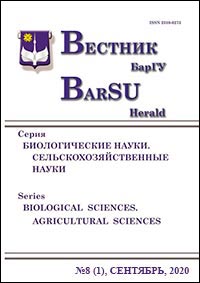THE USE OF ALLOPOLIPLOIDYIN SELECTION OF BLACK CURRANT AND GOOSEBERRY
Keywords:
black currant; gooseberry; alloploidy; distant hybridizationAbstract
The article focuses on problems of the use of allopolyploids in breeding of black currant and gooseberry.
Hybrids Ribes nigrum Linnaeus, 1753 Grossularia reclinata Linnaeus, 1753 with different genomic composition
were obtained. It was found that reciprocal amfigaploids differ from the original parent forms. Susutained sterility
does not allow to use them for practical purposes. Reciprocal allotriploidny forms can be used as an intermediate
stage in obtaining allotetraploid, as well as fertile diploid recombinants with significant features. Amphidiploids are
characterized by complex currant and gooseberry disease resistance, high percentage of normally formed pollen
grains, large fruits.
In amphidiploids with an equal ratio of the number of chromosomes of the original species, the homozygous
state of the Ribes and Grossularia genomes determines the dominance of many valuable traits of currant and gooseberry. At the same time, such signs of the initial forms as the rounding of the shoots, the specific smell of currant, despite the homozygous state of the genes that determine their appearance, remain recessive.
Ref.: 20 titles.
Downloads
Published
Issue
Section
License
Copyright (c) 2023 Вестник БарГУ Серия "Биологические науки. Сельскохозяйственные науки"
Это произведение доступно по лицензии Creative Commons «Attribution-NonCommercial» («Атрибуция — Некоммерческое использование») 4.0 Всемирная.
Авторы сохраняют за собой право заключать определенные договорные соглашения, касающиеся неисключительного распространения опубликованной версии работы (например, размещать ее в институциональном репозитории, публикация в книге) со ссылкой на ее первоначальную публикацию в этом журнале.





